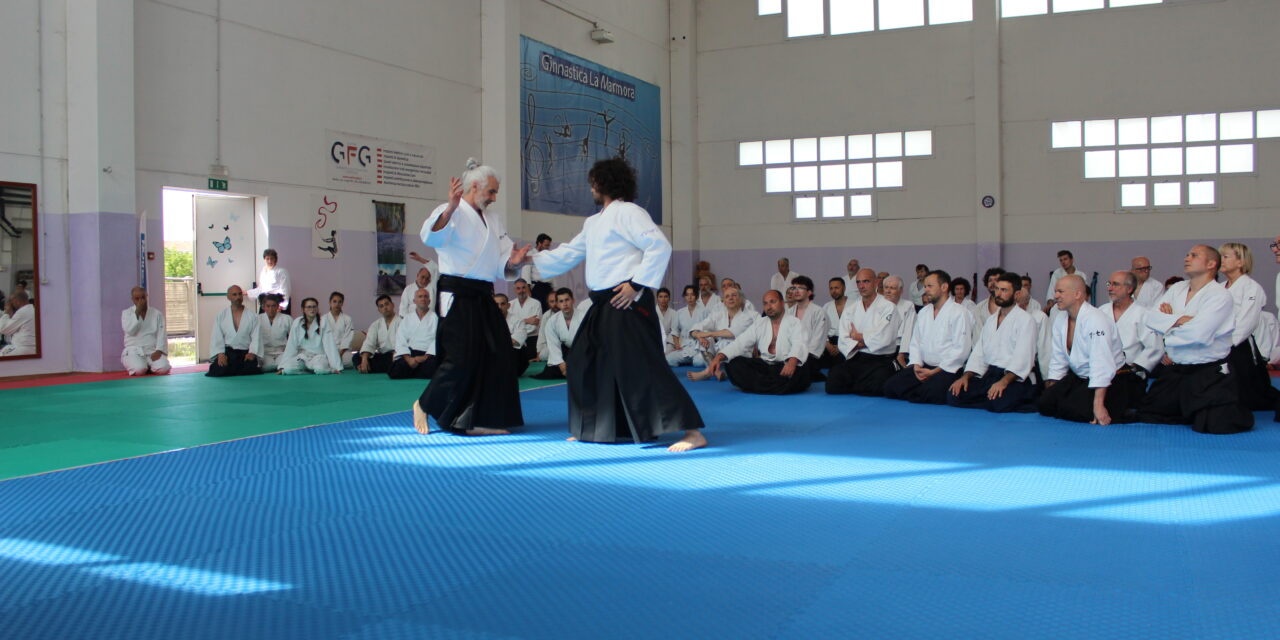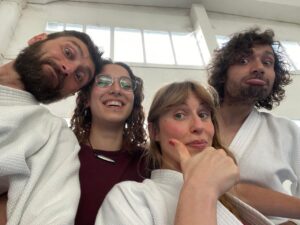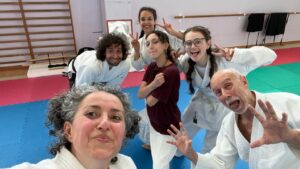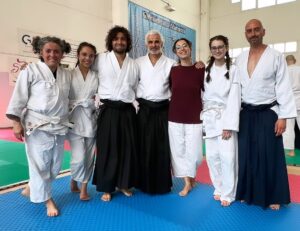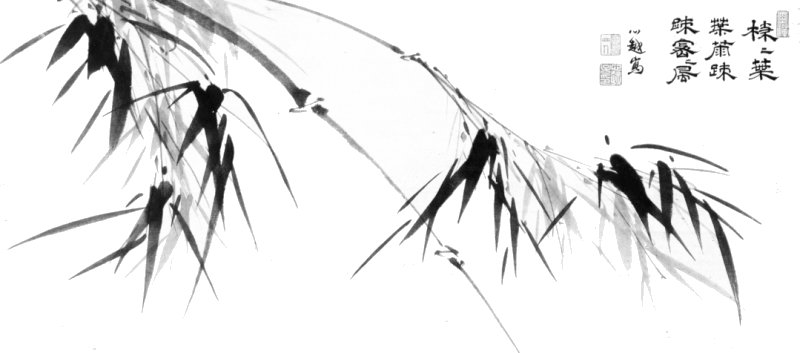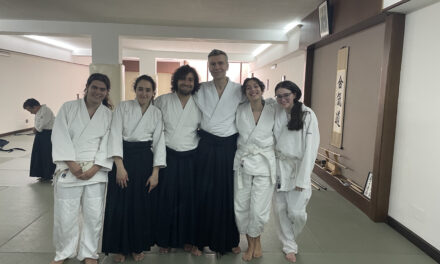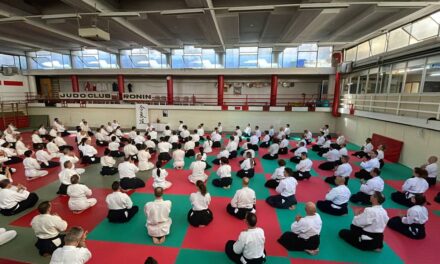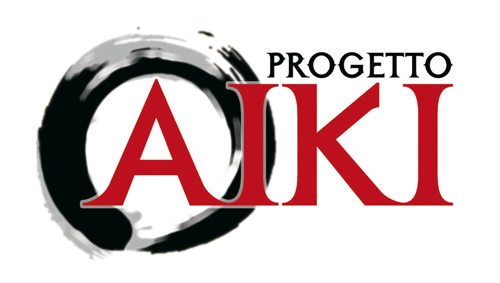After Miyamoto Shihan’s workshop, we went to Biella, Piedmont, to attend Bruno Gonzalez Sensei’s seminar, organized by our friend Beppe Domenichelli. Gemma, Samantha and Elisa are waiting for us there, just like Alessio, Antonio and Francesco, Gianni from Turin, David and Mara from Brescia and Laura and Paola from Nino Dellisanti’s dojo, once again from Turin. We are basically the first ones to arrive, budopass on the table and keikogi already on.
From the beginning, Bruno catches our attention by going from Katate Dori to Kaiten Nage, which will be the main theme of the seminar. This technique is characterized by the fact that the hand must be placed by the uke’s neck to make them go down, not by pushing or tugging, but by giving them a choice. As a matter of fact, uke can either accept to go down or not. The only thing which should not be done is get away while going down. By doing so the technique cannot indeed be correctly executed.
In the meantime, the other hand, the one controlling the arm, cannot go over the hip during this movement, just like one would do in fencing. Furthermore, it does not let the practitioner develop a strong, efficient gesture. I appreciated this particular detail, as trivial as it may seem, since it represents both the essence of Kaiten Nage in its final form and the correct martial attitude one should have.
Briefly, we focused on maintaining the axis with small movements which would not stimulate uke until the last moment. This kind of work was often proposed during the seminar, by even including Ikkyo and applying it to Chudan Tsuki and Katate Dori Irimi Nage. I had the pleasure to practice these two techniques with Davide, friend and colleague in the Executive Council of ProgettoAiki.
Once the morning is over, we quickly eat a sandwich and chat in a venue with a view of the Alps, then we start practicing once again. The so-called Musubi is the first thing we worked on. In particular, it is applied to the bokken, for the execution of which it is essential to keep a certain, constant distance. As a consequence, it is required to learn how to perceive the movement through the weapon, which is just as crucial in other martial arts like taijutsu.
One of the exercises we had to deal with consisted of going back to the initial position after being pushed, which we had to do by observing at first. We then practiced what we had already done in the morning, but by finding a more personal, free way to execute the techniques.
We are divided into groups of three to do so, because a more dynamic approach would have helped us mimic the way uke looks for contact in the Kaiten Nage. So, we have to go from a more technical execution to a free movement, the only limit of which is the maintenance of the axis. The movement would otherwise be ineffective.
I appreciated the way Bruno cured every single detail of the workshop, which proves even more why he is known for his technique, especially by those who follow Tissier’s teachings.
Thanks are due to both Bruno and Beppe, but also to the friends of mine whom I met on the tatami and with whom it is always a pleasure to practice. See you next time!

